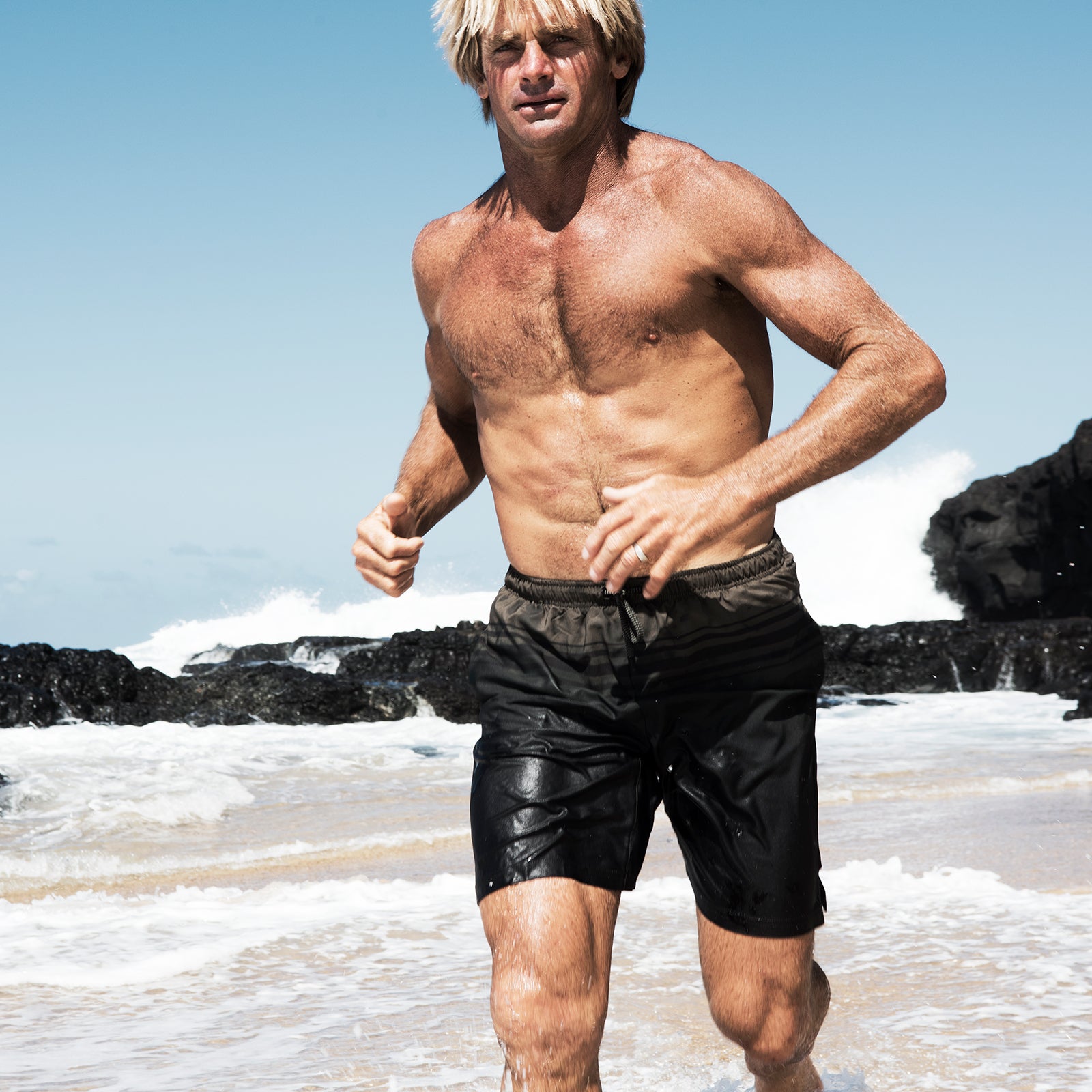I’ve dealt with plenty of injuries in my career, including six broken ankles and a torn ACL. Three years ago, I had a hip replacement on my dominant leg. When you spend decades in the ocean, you’re bound to hit a few rough patches, and the same is true for any serious athlete. So I started investing in resilience. Now everything I do—what I eat, how much I sleep, the way I train—is designed to protect me from being hurt. Here are my top tips for building a body and mind that can handle the load.��
Train Smart
The potential for injury from outside forces is everywhere—so don’t contribute to it with bad training. When I’m doing highly repetitive motions, I get creative and compensate with oppositional movements to avoid the hammering. (If you’re doing quad extensions, do hamstring curls, too; complement your ab workout with supermans to strengthen your lower back.) When I’m training for a long run, I won’t go out and put in a ton of miles. I’ll shift to shorter distances with unique challenges: running on sand or wearing a weighted vest, for instance.��
Lighten the Load
When you weight train, take your ego out of the equation. If you pick up a giant rack and start squatting, you can throw out your back in a heartbeat, but you’d have to do hundreds of bodyweight squats with poor alignment to hurt yourself. Instead of adding ten more pounds, subtract ten and do five more reps. And remember that you’re only as good as your weakest link—so train to your weaknesses, not your strengths.��
Focus on Flexibility��
A big part of protecting yourself involves devel-oping range of motion. Work on increasing mobility wherever you happen to be tight. Each body is unique, so your stretching routine will likely look different from someone else’s. I do yoga once or twice a week, but I also fill my time with activities that create flexibility naturally—like swimming and surfing.��
Fuel Wisely
There’s no one-size-fits-all diet. Each individual needs to find out which foods help them excel. I aim to drink an ounce of water per poundof body weight daily, and I avoid sugar—it’s one of the most inflammatory foods around. Instead I eat a wide array of nutrient-dense fruits and vegetables and high-quality fats, and I focus on staying hydrated. A dehydrated, inflamed body is an inflexible one.��
Get Back on the Horse
After I had hip-replacement surgery, I returned to diligent physical training as soon as I was able to stress the new hip. In two weeks, I was in the pool jumping, standing on my board, and paddleboarding. I used my body as a guide to determine when I was pushing it too far, and I rode that line of discomfort really carefully. The only way to learn what kind of pain is a signal that you should back off—and which kind of pain you can push through safely—is experience.
Shake Things Up
If you need to take some time off, you don’t have to do less, just adjust your routine. If you’re used to a certain volume of output, direct it into things that you don’t normally get to do—stuff that’s lower on the priority list when you’re operating at 100 percent. I spend more time focusing on diet, hydration, recovery techniques like massage and acupuncture, and physical therapy.��
Harness the Power of Your Mind
After dealing with so many injuries, I’ve learned to cope with the psychological impact. Of course doubt creeps in: Will I ever be able to surf again? My brain throws all this stuff at me. But I know I can handle it, because I’ve been through it before. Even if you come out of an injury with half the range of motion and half the strength you had before, it’s mind over matter. If you’re confident and patient, you can get your body back to where it was—or even better.


